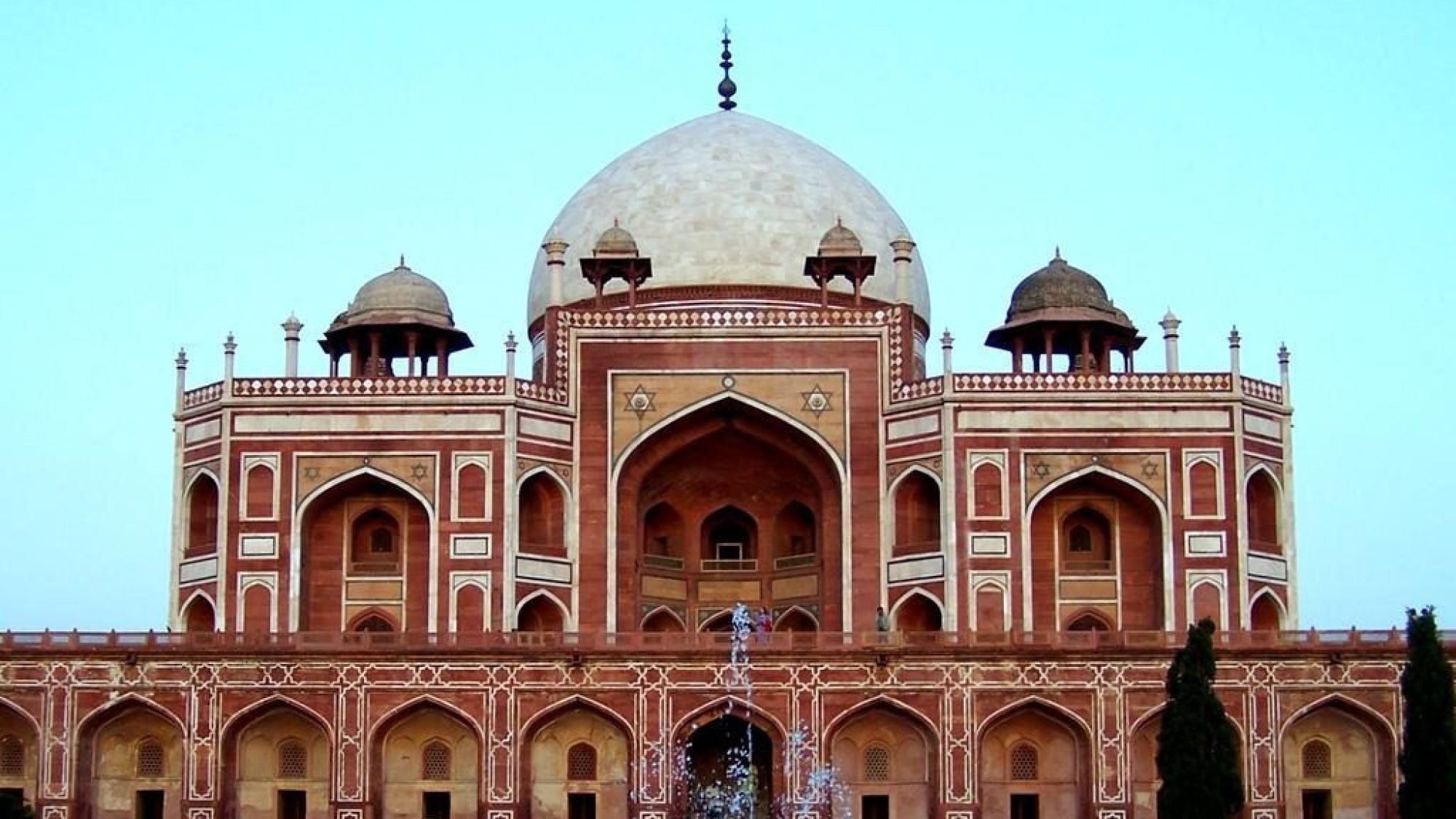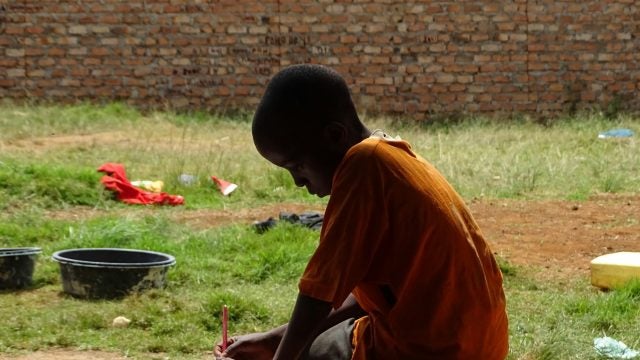
Title: Tackling Hindu-Muslim Conflict at the Interstices of Faith
The closely integrated relationships of certain religious communities present a compelling counter-narrative to views on interfaith conflict. Indic-Islamic engagement in several South Asian “guru-pir” groups challenges the conception of religions as completely separate entities. However, Hindutva and Islamist forces that maintain confrontational positions are currently laying siege to these centuries-old movements. This article discusses how the pressure on some of these groups, such as Satpanthi Khoja Ismailis, has led to the erosion of pluralism in favor of exclusionary conceptions of religion. Finally, the author proposes that transnational Aga Khan institutions can demonstrate the peace-making potential of interfaith engagement and produce a vibrant discourse that challenges religious conflict.
Introduction
A common assumption in the study of religion is that various creeds are inherently antagonistic, rendering religion a putative cause of war and terrorism. Accounts of clashes over who or how one worships litter history books, and journalists frequently cite the religious identities of warring parties as causes of contemporary conflicts. When addressing Muslim contexts in particular, Western policymakers tend to give more weight to religion as the reason for intergroup conflict rather than blame politics, economics, or territorial disputes. While clashes occasionally occur between religious groups, evidence from the Indian subcontinent reveals a rich history of harmonious communal intermingling.
Past interactions between Hindus and Muslims in South Asia offer a robust counterpoint to the narrative of religious antagonism. The interfaith relationships in the subcontinent that gave rise to the Sikh faith, Kabir Panth, the Bauls, Sai Baba movement, and Satpanth illuminate the potential virtue of intersectional spirituality. However, politics in contemporary South Asia have pressured these “guru-pir” groups to abandon their hybrid identities. In present-day India, such pressure stems from the government’s attempt to dilute the country’s pluralism. The ruling Bharatiya Janata Party’s rewriting of educational curricula diminishes the historical presence of Muslims in India and seeks to remake the country into a “Hindu Rashtra” (Hindu polity). Some Pakistani religious and political authorities have also pushed groups with hybrid spiritual identities to conform to Arab-centric practices. Guru-pir communities and Sufis in Pakistan have been forced to diminish the Indic elements of their faith. Scholar and cultural critic Henry Giroux discusses such “organized forgetting” as a mobilization strategy that politicians use to reframe the past to promote their own agendas.
Interfaith Engagement in South Asia
South Asia exhibits a strong history of interfaith engagement and hybrid religious identities. Several edifices built by medieval Muslim rulers in South Asia are inscribed with Hindu religious symbols, such as images of the lotus in the Taj Mahal. Certain Mughal emperors, especially the sixteenth-century Akbar the Great, encouraged sustained interfaith engagement at the royal court. Indian society at large also experienced vibrant inter-religious interactions during this period. For instance, the populist and indigenous Bhakti religious movement that challenged priestly and caste hierarchies in Hindu society also engaged with Sufi Muslims in worship that sought a direct relationship with divinity.
Such interactions in India gave rise to a religious symbiosis based on a common spirituality. Ethnographer Sultan Somjee terms these communities “guru-pir,” referring to the amalgamation of Indic and Muslim spiritual guides. Guru-pir groups include the Sikhs, Kabir Panth, the Sai Baba movement, and Satpanth, whose beliefs and teachings intertwine Indic and Islamic traditions. The Sikh holy book, for instance, contains both Bhakti and Sufi poetry. The fifteenth-century founder of the Kabir Panth group described Allah, the Islamic deity, and Rama, an Indic divinity, as his unified spiritual guide. He wrote that “Kabir’s a child of Allah and Rama; they’re his Guru and Pir.” Likewise, the nineteenth- and early twentieth-century saint Sai Baba of Shirdi, whose disciples possessed both Hindu and Islamic leanings, refused to identify his religious affiliation with one faith at the exclusion of the other.
Like other guru-pir communities, the Satpanth tradition represents an intercultural and interreligious understanding of faith concerned with universalist truth. The Satpanth (Path of Truth) movement in India arose from the teachings of the Persian Muslim preachers of the Shia Da’wat al-Haqq (Invitation to Truth). The pirs or Muslim spiritual guides indigenized the group’s beliefs in lyrical literature (ginans), which were composed in Indian languages and sung in Indian ragas. The lyrical literature and traditions draw on both Islamic and Indic spirituality. Pir Sadardin, the major fifteenth-century Satpanthi guru-pir who organized the movement, formulated the group’s ritual prayer (du‘a) in Gujarati, Sindhi, Arabic, and Persian. Words and symbols from Islamic and Indic traditions intertwined in the Satpanthi Khojas’ spiritual practice.
Challenges to Interfaith Understanding
While guru-pir traditions represent harmonious interfaith interactions, they have also experienced multiple challenges to their pluralist characters in the past two centuries. British rule in India asserted the idea that religions are completely distinct from each other. The colonial census’ monolithic categories labeled individuals as either “Hindu,” “Muslim,” or “Sikh,” among other faiths. This framework restricted open-ended religious identities that had long coexisted alongside dominant orthodoxies. The Hindu and Muslim representational politics that led to the subcontinent’s partition into India and Pakistan further reinforced this essentialist pigeonholing.
In recent decades, religious nationalists in South Asia have continued to exaggerate the differences between faiths for political purposes. Intensified Hindu nationalism and Islamism have further marginalized hybrid religious manifestations. Guru-pir communities now feel compelled to declare themselves as followers of one religion over all others, a choice that is antithetical to the pluralist and universalist guru-pir identity. The Hindutva nationalist ideology, in particular, seeks to reshape Indian national identity from one that embraces a variety of religious backgrounds to one that favors elite caste Hindu hegemony. The recent success of the Bharatiya Janata Party in India, which adheres to Hindu nationalism, has caused the systemic and violent marginalization of religious minorities. Guru-pir movements in India face pressure to identify solely as Hindu. As a result, certain breakaway Satpanthi groups have severely diminished their Islamic affiliations while prominently foregrounding Hindu symbolism in their practices. Religious nationalism in India has thus served to obscure centuries of religious pluralism and politically mobilize Hindu majorities.
Monolithic conceptions of religion have also resulted in Muslims facing pressure to conform to Islamic conservatism. For example, in Pakistan, conservative political elites favor exclusionary Islamist views of Saudi Wahabi dogma. These elites have accused guru-pir communities of not having “true” Islamic practices. Pakistani Sufis also face pressure to abandon interfaith activities with Hindus and Christians. In 2017, an Islamist suicide bomber killed ninety worshippers at a Sufi commemoration in Lahore, where the hereditary shrine guardians are Hindu. Ultra-conservative groups, such as Salafis, dismiss the indigenous Islamic practices in South Asia because of purist notions that consider only certain Arab-centric modes of worship to be authentically Islamic. Consequently, certain political and faith leaders in this region have diminished their own religious heritage in favor of Arab-centric norms. For instance, certain Arab-style hijabs, which Muslim women in South Asia rarely wore, became widespread in the region in the late twentieth century.
Even some of the guru-pir groups whom Wahabi or Salafi ideologies have not influenced directly are eroding the Indic aspects of their tradition. Such a trend among the Satpanthi Khojas (who have been under attack from both Islamist and Hindutva militants) reverses the centuries-long indigenization process through which Persian-origin pirs placed their Shia faith within an inclusive Indic-Islamic framework. The community’s leadership is Arabizing its religious vocabulary and subsuming its indigenous identity of Satpanthi Khojas under the term “Ismaili Muslims.” Decades ago, the community’s school curricula dropped Gujarati and Sindhi, curtailing linguistic access to the centuries-old Indic poetic tradition of ginans. Ismaili institutions also ceased to publish poems they categorized as being “rich in Hindu element.” Upon its establishment in 1977, the London-based Institute of Ismaili Studies, the transnational Ismaili community’s premier academic body, has focused on Arabic and Persian manuscripts while marginalizing the study of the Indic Satpanth branch. Even the communal buildings used mostly by Satpanthi South Asians in the subcontinent and the diaspora are now adorned mainly with Middle-Eastern designs, and ceremonial Central Asian robes have replaced Indian regalia. These choices reveal the leadership’s perception that Arabic and Persian elements are more authentically Islamic and Ismaili than the 700-year-old South Asian Satpanth tradition, a mindset that erodes the idea of a common Indic-Islamic spirituality.
Such processes proceed from the conception of religions as exclusive, monolithic entities separate from one another. This idea denies the interfaith expressions historically demonstrated in South Asian society among the millions of devotees to figures such as Kabir, Sai Baba, and Pir Sadardin. The intersecting spaces of guru-pir traditions are rich and dynamic, bridging multiple worldviews. Unfortunately, the current political climate erodes the distinctive nature of these groups that promotes interfaith harmony.
The Way Forward
Organized forgetting has engendered ignorance about shared religious values and histories of harmonious coexistence. The current Ismaili Imam, Aga Khan IV, has criticized the idea of the inevitability of clashes between religions and promoted pluralism. Failure to recognize the overlap between religions has contributed to contemporary conflicts, such as that between Hindus and Muslims. For individuals to recognize the social value that interreligious engagement brings, political and faith leaders must oppose narratives of religious essentialism and organized forgetting of interfaith histories.
The institutions representing guru-pir traditions can but have not been mobilized to counter hostile ideologies. The tremendous potential of the intersecting religious traditions in fostering better social relations remains largely uncharted. The Ismaili Imam has established several modern organizations with Khoja leadership to improve intergroup understanding. However, despite profound historical Satpanth interfaith interaction, the growing conception of religions as completely separate entities poses a major obstacle for even Khojas’ current understanding of hybrid faiths. For instance, the Ottawa-based Global Centre for Pluralism holds to the monolithic framework of religion to study pluralism in India, disregarding the social value of the intersectional Indic-Islamic guru-pir movements. Similarly, the Institute of Ismaili Studies in London, England generally overlooks the intertwining of faith traditions in South Asia. Toronto’s Aga Khan Museum can also better familiarize visitors with the dynamism of religious hybridity by exhibiting the spiritual interactions of Muslims with other religions, which are often found in sixteenth, seventeenth, and eighteenth-century Mughal paintings. The dozens of communal and secular educational Aga Khan institutions should advance an appreciation for the spaces where faiths interact. A collective effort of the global Aga Khan network, drawing on the centuries-long Satpanth tradition, can raise awareness of the peace-making potential of interstitial religious engagement. With their research capabilities, these institutions are well-positioned to and should study the productive outcomes of intersecting religious traditions.
Conclusion
The erroneous concept of individual religions as monolithic entities has contributed to the idea that faith communities are inherently confrontational. Such ideas hide the fact that shared spirituality has long existed across different faiths. Centuries of intermingling between Islamic and Indic worldviews in South Asia have brought together millions of people. However, self-serving politicians and extremist groups seek to erase the knowledge and practice of interstitial spirituality, inducing clashes across creeds. Religiously fluid movements are under intense pressure to identify only with one faith. However, given their unique comprehension of pluralist engagement, such movements and their institutions should respond with a powerful counter-narrative to those who promote inter-religious conflict.
…
Karim H. Karim is Chancellor’s Professor at Carleton University in Ottawa, Canada, where he previously served as Director of the Centre for the Study of Islam and the School of Journalism and Communication. He has also been Co-Director at the Institute of Ismaili Studies in London, senior advisor to the Aga Khan University and the Central Asian University, and member of the Aga Khan Development Network’s Higher Education Forum. Karim, who studied at Columbia and McGill universities, received the Robinson Prize for his book Islamic Peril: Media and Global Violence and has produced other critically acclaimed publications.
Image Credit: Wikimedia Commons
Recommended Articles

Amid stalled U.S. federal climate engagement and intensifying transatlantic climate risks, subnational diplomacy has emerged as a resilient avenue for cooperation. This article proposes a Transatlantic Subnational Resilience Framework (TSRF)…

The 1997 hijab ban in Türkiye left lasting effects on Muslim women’s psychological, social, and religious identities, shaping their experiences across academia, bureaucracy, and politics. Evidence from interviews…

This article advances the idea that teaching children their mother tongues and learning adjacent national languages offers better prospects for consolidating nation-building and contributing to cultural preservation. Kenya’s case illustrates…